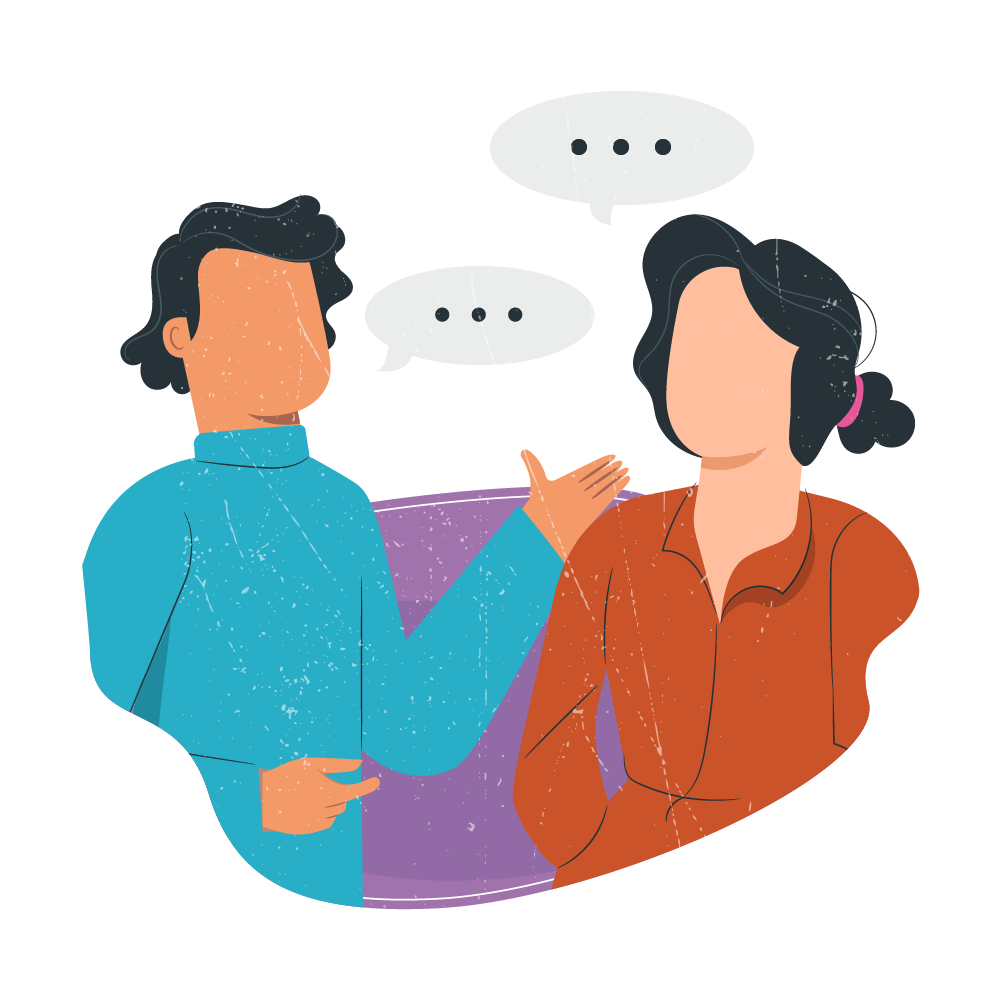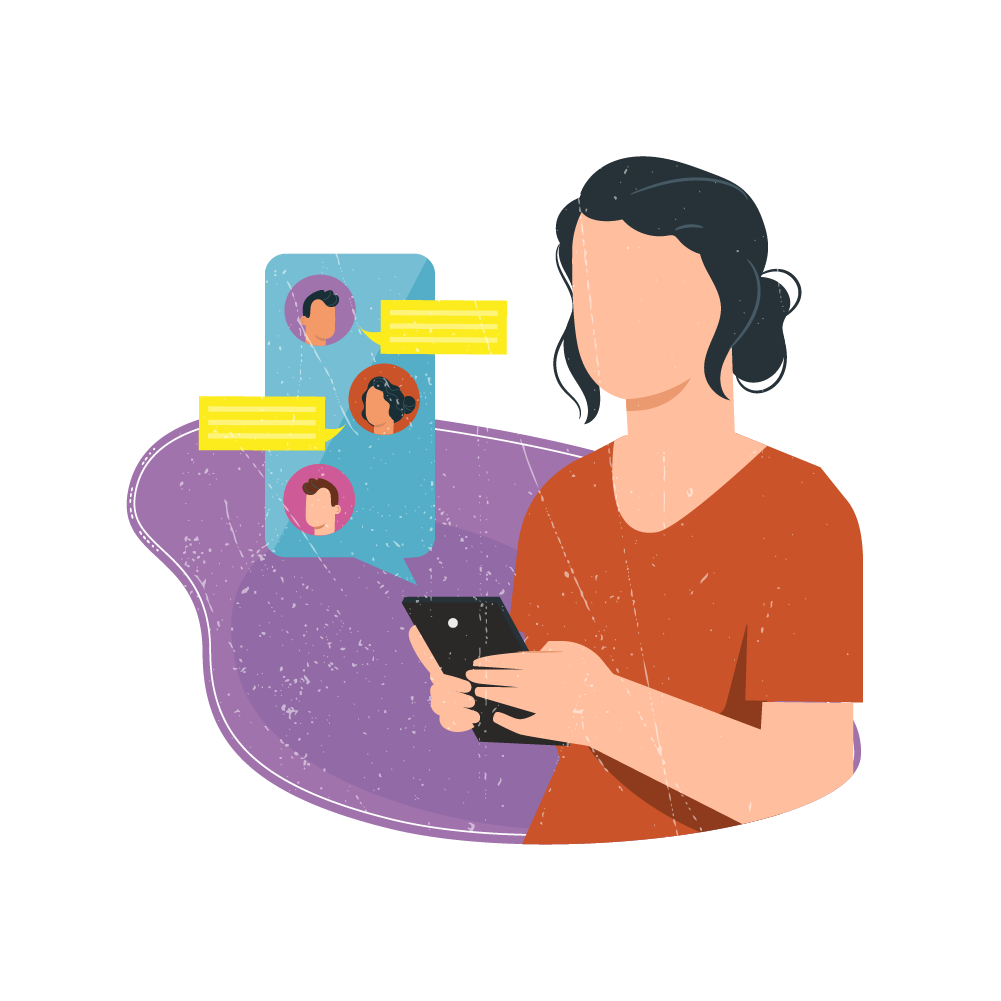護膚產生共鳴
Deep into a project right now, I can’t help but reflect on how I practice empathy in design. Human centered design means empathising with and designing for people, keeping our focus on people throughout. It is not just one stage, it is a mindset and practice that we carry through the whole process.
現在進入一個項目,我不禁要反思我在設計中如何實踐移情。 以人為本的設計意味著對人的理解和設計,使我們始終專注于人們。 這不僅是一個階段,而且是我們貫穿整個過程的一種心態和實踐。
“Empathy is when you can feel what another person is feeling. Empathy is the foundation of a human-centered design process; by deeply understanding people we are able to better design for them. “ — Hasso Plattner Institute of Design at Stanford
“暴怒是當您可以感覺到另一個人的感覺時。 移情是以人為本的設計過程的基礎。 通過深入了解人們,我們能夠為他們提供更好的設計。 “ —斯坦福大學Hasso Plattner設計學院
Whether we are at the front end, discovering and defining, or in the back end of the process, solutioning and refining, empathy helps us ultimately deliver outcomes that make life better for people. Sometimes we may get lost in the process, or we might be in a hurry to introduce our ideas and solutions. We may miss the moments that reveal more discoveries and connections, deepening our understanding of the whole, complex human experience.
無論我們是在前端,發現和定義,還是在流程的后端,即解決和完善,同情都可以幫助我們最終提供使人們的生活更美好的成果。 有時,我們可能會在此過程中迷路,或者我們可能急于介紹我們的想法和解決方案。 我們可能會錯過那些揭示更多發現和聯系,加深我們對整個復雜人類經驗的理解的時刻。
I have reflected on the good, the bad and the enlightening moments I’ve been fortunate to experience. I’ve contemplated empathy-woven design stories, like the one shared by the Embrace team. Developing the life-saving Embrace infant warmer using HCD involved an incredible journey of repeated interaction and engagement with people and remote communities.
我已經回顧了我曾經經歷過的好,壞和啟發性的時刻。 我已經考慮過同理心編織的設計故事,例如Embrace團隊分享的故事。 使用HCD開發挽救生命的Embrace嬰兒保暖箱涉及到與人們和偏遠社區的反復互動和參與的令人難以置信的旅程。
From these reflections, I’ve catalogued pointers that I feel help to anchor empathy behaviours through the process and practice of design.
從這些思考中,我對指針進行了分類,認為這些指針有助于通過設計的過程和實踐來錨定同理行為。
移情: 與人同在。 (Empathise: Be with people where they are.)
1.Consider the full spectrum of people, looking specifically into minorities and “outliers” that may have different perspectives, abilities and needs.
1.考慮所有人群,專門研究可能具有不同觀點,能力和需求的少數民族和“離群人”。
2. Solicit inputs from people in a way that works for them. Some people will find it easier to connect online, for others technology may be a barrier. Get as close to the natural or real everyday experience as possible.
2.以對他們有用的方式征求人們的意見。 有些人會發現更容易在線連接,因為其他人可能會遇到障礙。 盡可能接近自然或真實的日常體驗。

3. Empower and invite people to share their experiences, in their role as experts of their lives and experiences.
3.賦予并邀請??人們以生活和經驗專家的身份分享經驗。
4. Slow down enough to see and feel things differently. Suspend judgement, feel a connection to the person. Be a learner, and embrace another person’s perspective and experience. That may involve trying (experiencing it), observing or asking.
4.放慢腳步,以不同的方式看待和感受事物。 暫停判斷,與人建立聯系。 做一個學習者,擁抱他人的觀點和經驗。 這可能涉及嘗試(體驗),觀察或詢問。
5. Look for the complete context. We can look at tasks, but also beyond that — to understand why. Frameworks like AEIOU (Activities, Environments, Interactions, Objects and Users) remind us to explore widely and see inter-relationships.
5.查找完整的上下文。 我們可以研究任務,但除此之外,還可以了解原因。 諸如AEIOU(活動,環境,交互作用,對象和用戶)之類的框架提醒我們進行廣泛探索并查看相互關系。
“Empathy is not walking in another’s shoes. First, you must remove your own.” — Scott Cook, Founder Intuit
“ Empathy不會走在別人的鞋前。 首先,您必須刪除自己的。” -Intuit創始人Scott Cook
定義:從人的角度了解問題的性質和規模。 (Define: Make sense of the nature and scale of the problem from the person’s perspective.)
6. Reveal the connection between the obvious or surface-level details, and deeper, profound drivers, when describing what the person is looking to accomplish. Ensure clarity on how big the scale of the human problem to be solved actually is. Jobs to be done thinking helps here, particularly the idea of four levels of job conveyed by Jim Kalbach in The Jobs To Be Done playbook. Jobs can be abstracted to micro, small, big and aspirational jobs.
6.在描述一個人想要完成的工作時,揭示明顯或表面細節與更深層次的驅動因素之間的聯系。 確保明確要實際解決的人類問題的規模有多大。 待完成的工作思考會有所幫助,尤其是吉姆·卡爾巴赫(Jim Kalbach)在《待完成的工作》劇本中傳達的四個層次的工作想法。 可以將工作抽象為微型,小型,大型和有抱負的工作。
7. Document and convey the entire situation and context for the person and the problem. Use storytelling and visualisation to share what has been learned and what is needed, as a powerful way to engage the team in the essence of the human. This may involve not just diagrams like experience maps and atlases, but also video and photographic artefacts of people and their lives.
7.記錄并傳達人員和問題的整個情況和環境。 使用講故事和可視化來共享已學到的知識和需要的知識,這是使團隊參與人類本質的有效方法。 這可能不僅涉及諸如經驗圖和地圖集之類的圖,而且涉及人及其生活的視頻和攝影文物。

8. Avoid categorising and labelling different types of people in a way that implies that the representation of a person is fixed or absolute. There is always more, and always change.
8.避免以暗示某人的代表是固定或絕對的方式對不同類型的人進行分類和標記。 總會有更多,并且總是在變化。
9. Clarify if a phenomenon is specific or widespread and be clear on the extent to which the problem definition is inclusive. Specifically, is the intent to address different types of needs with variability, or is it to address an average (which may result in some measure of exclusion)?
9.弄清一種現象是特定的還是普遍的,并應清楚地說明問題的定義所包含的范圍。 具體來說,是要解決具有可變性的不同類型的需求,還是要解決平均值(可能會導致某種程度的排斥)?
Ideate:激發人的潛能,成為北極星。 (Ideate: Spark ideas with human potential as the north star.)
10. Springboard from human stories, bringing forth the vivid, emotionally compelling and real (not made up!) truths to inspire individual and team idea generation.
10.從人類故事中跳板,提出生動,令人信服的真實(而不是虛構的)事實,以激發個人和團隊的想法。

11. Include techniques for ideation that keep the human need and experience at the forefront, like storyboarding.
11.包括諸如故事板之類的構思技術,將人類的需求和經驗保持在最前沿。
12. Consider approaches that involve co-design and generative design with people (for example card sorting, or projective methods and creative tool kits), drilling down on details and specific elements.
12.考慮涉及與人共同設計和生成設計的方法(例如卡片分類,投影方法和創意工具包),并深入研究細節和特定元素。
原型: 使功能和情感體驗盡可能接近現實。 (Prototype: Make the functional and emotional experience as close to reality as possible.)
13. When exposing people to prototypes that bring ideas to life, use techniques that keep it real and interactive such as role-play or simulation. If only remote options can be used for prototyping, use video movies or capture experience on video. Visual and as close to reality as possible are key. How the person will experience it.
13.在使人們接觸將思想變為現實的原型時,請使用保持角色真實或互動的技術,例如角色扮演或模擬。 如果僅遠程選項可用于原型制作,請使用視頻電影或捕獲視頻體驗。 視覺和盡可能接近現實是關鍵。 該人將如何體驗它。

14. When developing and sharing the prototype with people, keep in mind the functional usability aspects that make tasks and activities achievable, and the emotional qualities.
14.在開發原型并與人們共享原型時,請記住使任務和活動可以實現的功能可用性方面以及情感品質。
15. Stay focused on the challenges that people are experiencing in achieving their goal, using multiple rounds of prototyping to keep getting to better.
15 。 使用多輪原型制作來不斷改善自己,從而專注于人們在實現其目標時遇到的挑戰。
測試: 抵制建設的誘惑; 擁抱重新學習。 (Test: Resist the temptation to build; embrace relearning.)
16. Ensure that a variety of voices are involved in testing. If the same group of voices are involved all the way through the design, there is a risk of everything being agreeable, a phenomenon called the Ikea effect.
16.確保測試中涉及各種聲音。 如果在設計過程中一直涉及同一組聲音,則存在一切可能都令人滿意的風險,這種現象稱為宜家效應 。
17. Be prepared to “ go public” — open to being challenged. Testing in context with the people it is intended for enables real-world, powerful feedback.
17.準備“公開”-容易受到挑戰。 在針對人員的上下文中進行測試可以實現真實,強大的反饋。

18. Actively look for what is flawed. This is the time to catch the mismatches and pinpoint the refinements that get the experience working for people.
18.積極尋找有缺陷的地方。 現在是時候抓住不匹配之處,并找出可以為人們工作的經驗的改進之處。
19. Keep an eye open to what is resonating and connecting with people. Why is it so, what can be learned from that and potentially amplified?
19.留意與人共鳴和聯系的事物。 為什么會這樣,從中可以學到什么并可能擴大?
20. Consider the solution and how the customer experiences it against the outcomes that are desired. Has the experience enabled the person to progress towards what they are seeking to accomplish?
20.考慮解決方案以及客戶如何根據期望的結果體驗解決方案。 經驗是否使人能夠朝著自己想要實現的目標前進?
“who makes it” is often vastly different from “who uses it”
“誰創造了它”通常與“誰使用它”有很大的不同
The stakes are always high, no matter the situation or scale, and I feel it in the pit of my stomach when what we do falls short. Conscious of the trade-offs made along the way, and the fight we often have against our own biases, checklists like these can help us stay on the human-centered track.
無論情況或規模如何,風險總是很高的,當我們做不到的事情時,我會感到非常沮喪。 意識到在此過程中要做出的取舍,以及我們經常與自己的偏見進行斗爭,像這樣的清單可以幫助我們走在以人為本的道路上。
To borrow from Kat Holmes, in experience design “who makes it” is often vastly different from “who uses it”. Empathy combined with curiosity help us to avoid making assumptions and continuously evolve towards a better outcome for the people we serve.
向凱特·霍爾姆斯 ( Kat Holmes)借用,在體驗設計中“誰創造了它”通常與“誰使用它”有很大不同。 善解人意和好奇心幫助我們避免做出假設,并不斷為我們服務的人們取得更好的結果。
翻譯自: https://uxdesign.cc/20-pointers-for-weaving-empathy-through-human-centered-design-e1568e0ad65b
護膚產生共鳴
本文來自互聯網用戶投稿,該文觀點僅代表作者本人,不代表本站立場。本站僅提供信息存儲空間服務,不擁有所有權,不承擔相關法律責任。 如若轉載,請注明出處:http://www.pswp.cn/news/275610.shtml 繁體地址,請注明出處:http://hk.pswp.cn/news/275610.shtml 英文地址,請注明出處:http://en.pswp.cn/news/275610.shtml
如若內容造成侵權/違法違規/事實不符,請聯系多彩編程網進行投訴反饋email:809451989@qq.com,一經查實,立即刪除!



)




會殺死導航抽屜嗎?)


)





中奇怪的一項功能)
